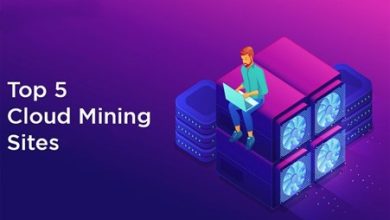Mastering Integration: Soumick Chatterjee's Expertise in Enterprise Solutions

In the modern business landscape, enterprise integration serves as the critical connective tissue that binds disparate systems into a cohesive, efficient framework. This process enhances operational fluidity and enables organizations to respond swiftly to market demands, ensuring sustained competitiveness. At the heart of this network lies the expertise of professionals like Soumick Chatterjee, whose contributions over nearly 15 years have been pivotal in the field of enterprise integration.
With a career beginning at Accenture, Soumick has developed a deep understanding of service-oriented architecture (SOA), which laid the foundation for his solutions in enterprise integration. His journey from Accenture to his current role at Bluegreen Vacations is defined by refining integration practices and optimizing processes. Reflecting on his early experiences, Soumick shared, “My first encounter with SOA was back in 2010,” marking the start of a career focused on implementing innovative integration frameworks.
Soumick’s efforts in advancing enterprise integration, particularly through the deployment of SOA solutions, have helped shape strategic directions across his workplaces. His work not only optimizes existing processes but also lays a scalable foundation for future growth and adaptation. As companies increasingly prioritize seamless integration for comprehensive data management, Soumick’s contributions underline his influence in shaping the future of enterprise integration.
Journey into SOA integration
The journey into SOA and enterprise integration for Soumick began in 2010 during his tenure at Accenture, where he was tasked with decoupling code in Cobol to interact with DB2 and Oracle databases. This project marked the start of his SOA journey as he developed modules that allowed Cobol programs to access database tables without needing to understand their architecture. “Rather than editing all 100-plus programs that were actually accessing the database,” Soumick explains, “you are now only going to change one module.”
Over the years, his expertise expanded into various technologies, including Oracle SOA middleware for a healthcare provider and, later, Dell Boomi technology. At Bluegreen Vacations, he played a key role in redefining their Enterprise Integration layer, successfully consolidating all integrations into one unified platform. This experience has now positioned him to tackle a similar challenge at a new company, where his goal is to unify discrete interfaces and APIs across the company, ensuring seamless integration and reducing redundancies.
Tackling Boomi API Gateway challenges
Implementing the Boomi API Gateway presented several significant challenges, particularly in moving people out of their comfort zones and gaining executive buy-in for long-term benefits. As one of the early adopters of the Boomi Gateway, Soumick’s goal was to transition the organization’s API access layer to a common platform, which involved relocating Boomi servers to a non-DMZ zone and exposing the Gateway externally.
This shift required meticulous planning and execution. “We were able to migrate everyone from non-gated URLs to gateway-controlled APIs,” Soumick explains, after months of setting up new runtimes, ensuring application adaptability, and minimizing latency. This phased approach was critical in reducing impact and ensuring a smooth transition for the entire organization.
Lessons from platform migrations
Managing platform migrations, especially for live systems, introduced new challenges that shaped Soumick’s approach to integration projects. He recalls the complexity of migrating Boomi systems, emphasizing that “it’s not an easy migration that can happen as it can actually stop the entire company from functioning,” requiring a sophisticated strategy that wouldn’t interrupt ongoing operations. To achieve this, he and his team built a parallel platform, carefully migrated codes and configurations, and conducted thorough testing before flipping the URL to the new system.
These experiences have deeply influenced his migration strategies, leading him to adopt patterns like building from scratch, phased migrations, and migrating to a common schema. These approaches ensure that migrations are seamless and that the risk of disruption is minimized, reflecting the lessons learned from previous projects.
Mastering SOAP and RESTful APIs
SOAP and RESTful web services have been the foundation of Soumick’s work in API and integration teams. Starting with SOAP WSDL and XML, he observed the industry’s gradual shift towards the REST protocol with JSON, a format that simplifies the consumption and creation of API services. At Bluegreen Vacations, SOAP APIs were initially prevalent due to legacy systems like AS-400, but the focus has since shifted to RESTful APIs with JSON. “SOAP and RESTful web services are like the main bread and butter for an API team,” Soumick notes, reflecting on their importance in integration work.
This transition enabled more seamless integration between on-premise and cloud applications. For instance, data from the AS-400 midrange application could be sent to Salesforce through integration APIs, ensuring that even if the CRM provider changes, the legacy system remains unaffected. This approach allows for one set standard to call a Boomi API or a company-owned API, thereby decoupling on-prem applications from both cloud and other on-prem systems. This strategy ensures flexibility and continuity across platforms, regardless of changes in underlying technologies.
Keys to successful enterprise integration
Successful enterprise integration, according to Soumick, hinges on established integration patterns, a centralized team, and policies that enforce these patterns across applications. When Soumick joined Bluegreen Vacations, integration efforts were fragmented, with each team managing its own API calls and file-based integrations. To address this, he led the creation of a centralized integration team, ensuring that all requests were funneled through a single point. This approach not only increased visibility but also reduced duplicate work, allowing the team to manage integrations more efficiently.
Centralizing the integration efforts also brought significant security advantages. Soumick highlights, “The key factors that contribute towards successful integration of enterprise applications is to have established integration patterns in the company,” which helped streamline operations and enhance security. By managing APIs at the integration layer rather than the application layer, the team could more easily address security breaches or other issues, ensuring a robust and secure integration process across the organization.
Staying ahead in SOA trends
To stay ahead in the ever-evolving field of SOA and Enterprise Integration, Soumick relies on a multifaceted approach. He actively engages with vendors and partners, often attending presentations where they showcase innovative solutions developed for other clients. “If we have product fit,” he notes, “then we ask for a POC/Demo” to explore how these solutions can be integrated into their systems.
Online research also plays a critical role, as Soumick and his team review forums and articles to learn from other organizations facing similar challenges. Additionally, attending conferences that focus on integration space provides valuable insights into upcoming tools and technologies. When a promising solution is identified, Soumick’s team conducts an architectural review and a POC to ensure it meets their needs before moving forward with implementation. This thorough process ensures that they remain at the forefront of integration trends while delivering practical, efficient solutions.
Impactful integration projects
The technical expertise of Soumick has driven several projects that significantly improved integration processes and delivered tangible business benefits. One such project involved automating bulk rental and guest reservations, which were previously handled manually, particularly for events like weddings and conferences. By creating a scheduled job to process incoming files and book them through the API engine, Soumick’s team saved considerable time and reduced errors.
Another key initiative was the retirement of multiple integration tools in favor of a single platform. This consolidation not only increased visibility but also reduced licensing costs and operational complexity. Reflecting on this effort, Soumick notes, “Migrating to low-code/no-code tools has significantly reduced development time and effort,” enabling faster time-to-market and substantial cost savings. Additionally, automating customer case creation and closure in Salesforce allowed customer support teams to focus more on their core tasks, enhancing overall efficiency.
Advice for future IT leaders
For aspiring IT professionals looking to specialize in SOA and Enterprise Integration, Soumick emphasizes the importance of mastering a wide range of integration patterns. It’s essential to have a solid understanding not only of primary protocols like SOAP and RESTful APIs but also of other integration types such as triggered, file-based, and queue-based patterns. “One should be familiar with all those patterns,” Soumick advises, as well as understanding the different integration points between on-premise and cloud-based systems.
Beyond technical knowledge, Soumick stresses the significance of creating “one integration platform, one source of truth” to manage all traffic. He highlights the need for proficiency in working with data, SQL, and scripting tools, which are crucial for developing a robust and efficient integration framework. This comprehensive skill set will empower professionals to build scalable, unified systems that effectively bridge diverse applications and technologies.
Soumick’s integration career is marked by strategic foresight and impactful projects, significantly advancing organizational approaches to integration challenges. At Bluegreen Vacations, he centralized platforms, enhancing efficiency and managing complex APIs. His consolidation efforts provided cost benefits, including reduced licensing expenses from unified tools, revealing methodical planning.





